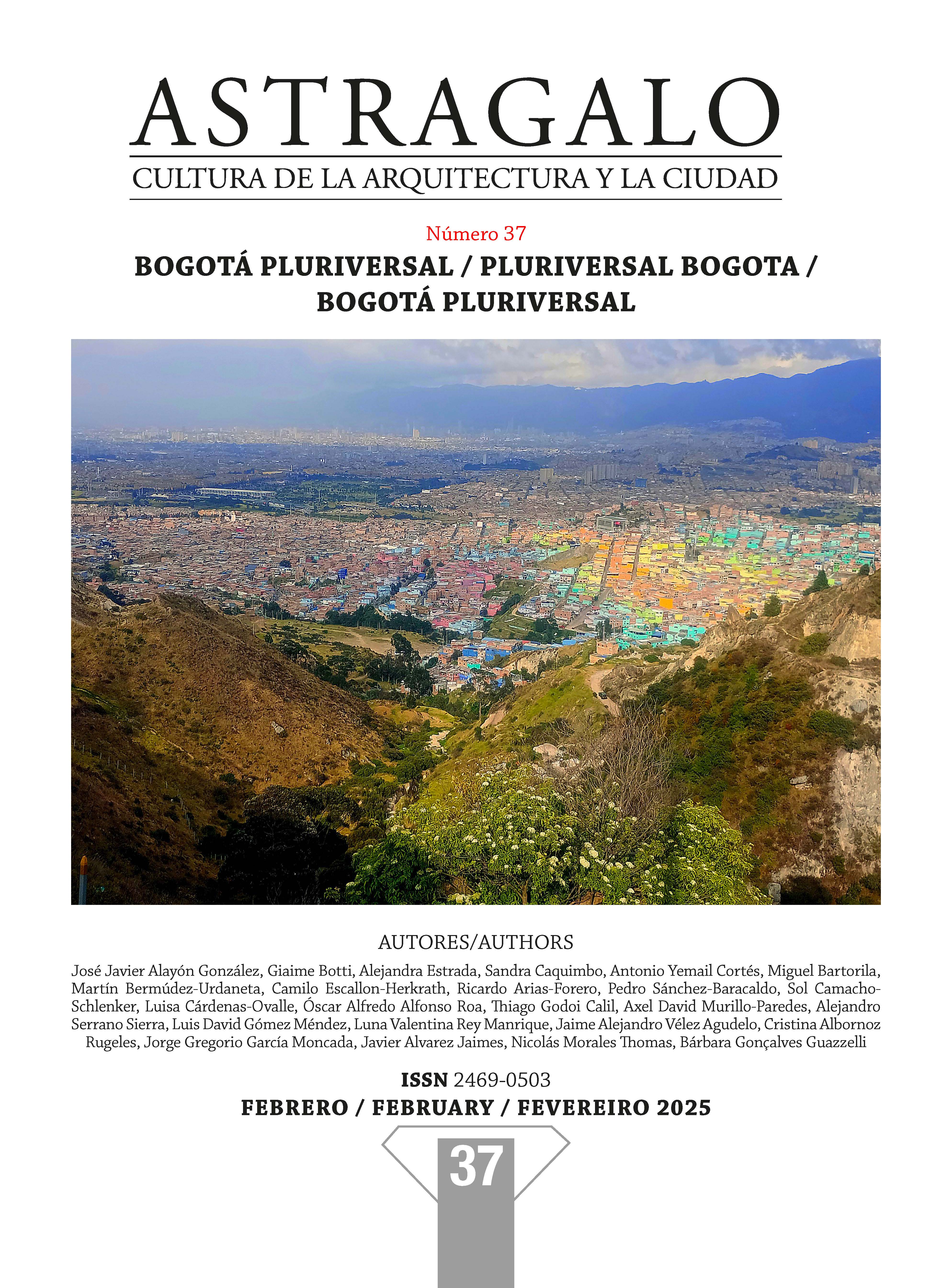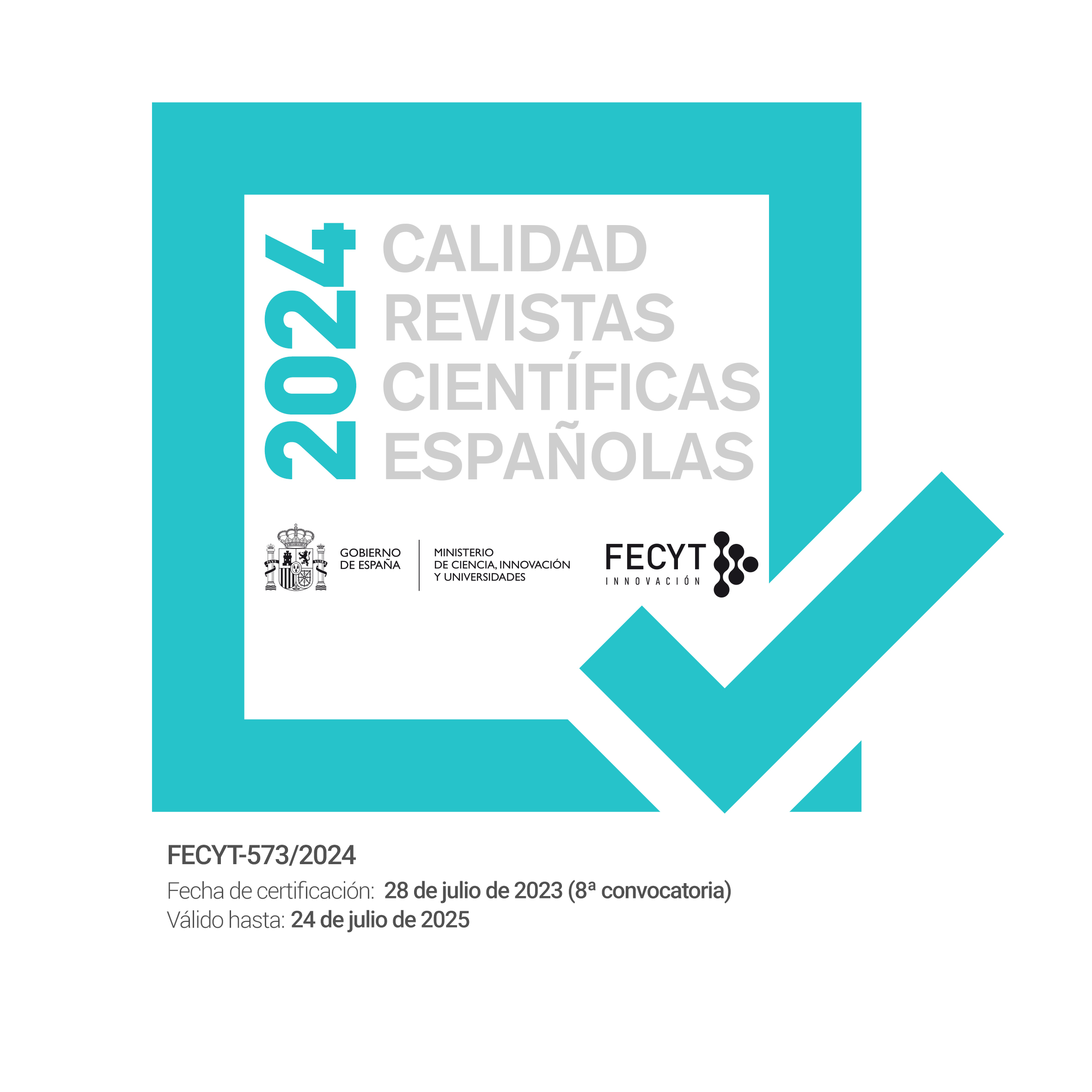Exploring the sound and spatial dimension
An experience of conscious listening in the in-between spaces of the former El Campito Health and Rest Home in San José.
DOI:
https://doi.org/10.12795/astragalo.2025.i37.08Keywords:
sound character, in-between spaces, electroacoustic piece, Campito de San JoséAbstract
This article addresses the phenomenon of sound in intermediate spaces through an exercise of conscious listening that evokes memory and atmosphere of a place. In order to contribute to research and creative works that involve sound and space, it is necessary to identify concepts about sound perception from different listening modes, connect them to a specific space and offer an experience focused on sound. To achieve this, three types of approach were developed, involving a frame of reference, an analysis of the elements and types of spaces and immersion in sound experience. The first section presents a frame of reference, providing key concepts about sound character and modes of listening. The second section justifies conditions offered by intermediate spaces and selection criteria for the case study: El Campito de San José, located on a campus of the Universidad de Los Andes in Bogotá, Colombia. The third section describes the fieldwork, testimonies and technical requirements used in sound recordings necessary for the composition of an electroacoustic piece. Conceptual criteria, data obtained from the site, and the sound experience of the electroacoustic piece described in this document transcend textual and visual content, offering a sound experience that reflects the effect of sound on perception and memory of space.
Downloads
References
Albornoz Plata, A. 2003. Temas Médicos, vol. XVI. Academia Nacional de Medicina, 18–19.
Álvarez Gómez, B. 1990. “Labor humana, cultural y evangelizadora de las Dominicas de la Presentación en los Llanos de Casanare.” En Actas del II Congreso Internacional sobre los Dominicos y el Nuevo Mundo, 986–990.
Augoyard, J. F. 2006. Sonic Experience: A Guide to Everyday Sounds. Editado por H. Torgue. McGill-Queen’s University Press.
Blacking, J. 2006. ¿Hay música en el hombre? Edited by Francisco Cruces. Alianza Editorial.
Blesser, B., y L.-R. Salter. 2009. Spaces Speak, Are You Listening? Vol. 1. Massachusetts Institute of Technology.
Carles, J. L., y C. Palmese. 1991. “Identidad sonora urbana.” Estudio de Música Electroacústica, 7–10.
Carrasquilla Botero, J. 1991. “La sede de la Universidad de los Andes.” Historia Crítica 1 (5): 77–97.
Chion, M. 2014. La Audiovision. Edited by A. López Ruiz.
Cox, C. L. 2006. “Listening to Acousmatic Music.” Columbia University.
Estrada, A. M. 2016. “El arte sonoro y su materialidad invisible.” Revista de Teoría del Arte 18: 71–77.
García Moncada, Jorge Gregorio. 2023. “Campos de San José: Reducción en estéreo.” In SoundCloud. Audio, 19:55. https://soundcloud.com/jorge-garcia/campos-de-san-jose-reduccion-en-estereo.
Gayou, E. 2007. “The GRM: Landmarks on a Historic Route.” Organised Sound, 207.
Labelle, B. 2010. “Chapter 3: Sidewalk: Steps, Gait, and Rhythmic Journey-Forms.” In Acoustic Territories. Continuum.
Lippard, L. 1997. Six Years: The Dematerialization of the Art Object. Vol. 1. University of California Press.
Morales Ferraro, A. 2019. Estudios técnicos e históricos del bloque U: Capilla Campito de San José, Universidad de los Andes.
Reyna, A. 2020. “La experiencia narrada como vehículo de construcción colectiva en la música de Luc Ferrari.” Revista del Instituto Superior de Música 17: 43–59.
Satizábal, A. E. 2004. Molinos de trigo en la Nueva Granada: Siglo XVII y XVIII. Universidad Nacional de Colombia.
Thibaud, J.-P. 2011. “A Sonic Paradigm of Urban Ambiances.” Journal of Sonic Studies 1: 7–14.
Truax, B. 1996. “Soundscape, Acoustic Communication, and Environmental Sound Composition.” Contemporary Music Review 15 (1): 53–55.
Walls, I. 2022. “El patio: Una abertura al cielo.” Landuum. .
Downloads
Published
How to Cite
Issue
Section
License
Copyright (c) 2025 Jaime Alejandro Vélez Agudelo, Cristina Albornoz Rugeles, Jorge Gregorio García Moncada

This work is licensed under a Creative Commons Attribution-NonCommercial-ShareAlike 4.0 International License.


















